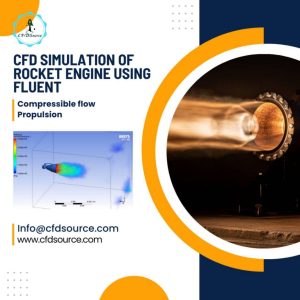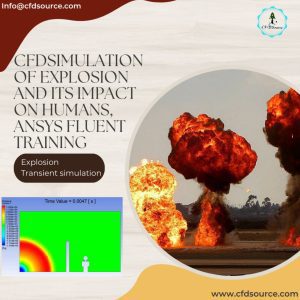CFD Simulation Services: High-Fidelity Simulations with Guaranteed Precision
Searching for CFD simulation services? You’re probably asking: How accurate will the results really be? Will they truly grasp my specific engineering problem? Is my confidential data safe? Can I expect timely delivery? And will the insights be practical enough to act on? We understand these concerns deeply. Finding a partner you can trust matters, and our focus is on providing reliable analysis and clear answers to move your project forward.
مورد اعتماد
برندهای معتبر

97%
Client Satisfaction
Experience the Power of Precision with Our CFD Simulation Services
Advanced CFD Modeling
We are equipped to model intricate CFD scenarios, including fluid-structure interaction, combustion analysis, multiphase dynamics, and heat transfer, alongside basic fluid flow simulations, for all your industrial and academic needs. 🛠️🔬
Reliable CFD Analysis
Rely on our expert CFD analysis for validated and defensible results that ensure you can confidently proceed with successful industrial designs and precise academic publications. 💯💼
Save Time & Focus on Priorities
Streamline your project by letting us handle the challenging CFD simulations. This saves you valuable time for analyzing results, brainstorming solutions, academic writing, or focusing on other project priorities. 🗓️💻
Expert CFD Knowledge
Benefit from the collective expertise of our team, featuring engineers with advanced degrees and a strong history of success on hundreds of industrial and academic CFD projects, to improve your work. 📊🏆
CFD simulation services
Expert CFD Simulation Services: Turn Your Complex Engineering Challenges into Competitive Advantages
It started with a call from a Mr. Kavianpour, a technical director I’d spoken with briefly at a conference. His team was stuck. They were developing a new high-performance heat exchanger, and the second prototype had just failed its performance benchmark. Badly. The pressure drop was way off, and thermal imaging showed hotspots where their models predicted none. They were three months behind schedule, the board was getting impatient, and the budget for a third prototype was on the line. They were flying blind and burning cash.
That’s the reality of hardware development, isn’t it? The gap between the CAD model and real-world performance can be a minefield. You’re forced to make high-stakes decisions based on assumptions, and a wrong one can set you back months and millions. 👨💻
Are You Facing a Similar High-Stakes Engineering Crossroad? You’re Not Alone.
Maybe it’s not a heat exchanger. Maybe it’s an aerodynamic profile that isn’t delivering the downforce you expected. Or a mixing tank where the reaction yield is inconsistent. Or maybe you’re a PhD candidate staring at a simulation that refuses to converge, with your thesis deadline looming. The specifics change, but the core problem is the same: you have a complex fluid dynamics problem, and you need reliable answers to move forward.
Beyond Colorful Contours: We Deliver Actionable Insights That Drive Real-World Decisions
Look, anyone with a software license can generate a flashy velocity contour. But a pretty picture that’s based on flawed physics isn’t just useless; it’s dangerous. It gives you a false sense of confidence to make a bad decision. I learned that the hard way about seven years ago on a pump casing project. Our initial mesh—which looked perfectly fine—predicted zero cavitation. The physical test, however, showed significant impeller pitting. The reason? We hadn’t properly resolved the boundary layer with prism layers, leading to an inaccurate pressure prediction right at the blade surface. It was a humbling lesson: the value is in the engineering judgment, not just the computation.
That’s what we do here. We deliver validated, defensible CFD Simulation Services that you can confidently base your critical design, manufacturing, and research decisions on. Its not just about running the solver; it’s about understanding the underlying physics and ensuring the simulation is a true digital twin of reality.
Our Technical Rigor is Your Guarantee: The CFDSource Engineering Standard
This is where the real engineering work happens, long before you see a single result plot. Our process is built on a foundation of methodical rigor because there are no shortcuts to an accurate answer.
Grid Independence & Mesh Quality: The Non-Negotiable Foundation of Every Accurate Simulation
A CFD simulation is only as good as its mesh. Period. An improper mesh will yield results that are numerically “converged” but physically wrong. We treat meshing as the most critical step of the entire process. This means we conduct a Grid Independence Study for virtually every project, where we systematically refine the mesh and run the simulation until the key results (like pressure drop, lift coefficient, or heat transfer rate) stop changing significantly. This is the only way to be certain the solution is independent of the mesh discretization.
We don’t believe in a one-size-fits-all approach. The choice between a structured hexahedral mesh for clean aerodynamics and an adaptive tetrahedral mesh for a complex internal geometry is a critical engineering decision, not an automated task.
Meshing Parameter | Strategy A: Automated Tetrahedral | Strategy B: Hybrid Hex-Dominant | Strategy C: Fully Hexahedral (Multi-block) | Our Decision Rationale |
Primary Application | Complex internal geometries, fast turnaround | External Aerodynamics, Turbomachinery | Pipes, channels, simple airfoils | We select the strategy based on your geometry’s complexity vs. the required boundary layer accuracy. |
Y+ Target Control | Difficult to control precisely, requires many thin prism layers | Excellent control with high-quality prism layers | Absolute, precise control over near-wall cells | For any simulation involving heat transfer or aerodynamic forces, precise Y+ control is non-negotiable. |
Cell Quality (Skewness) | Can produce high skewness cells in complex regions | Generally higher quality, better cell orthogonality | Highest possible quality, minimal numerical diffusion | Lower skewness means a more stable and accurate solution. We always aim for a max skewness below 0.85. |
Node Count / CPU Time | Highest for a given accuracy level | Moderate; efficient use of cells | Lowest for a given accuracy level | We balance computational cost against turnaround time, but never at the expense of accuracy. |
Typical Use Case | Quick initial analysis, very complex engine blocks. | Vehicle aerodynamics, pump impellers, valve bodies. | Wing profiles, pipe flow, heat sinks. | Your project’s specific physics dictates our meshing strategy. |
Model Validation & Verification: We Prove Our Simulations Against Real-World Data
How do you know you can trust the results? We answer that question head-on. Before delivering any final report, we perform a comaprison of our simulation results against a known benchmark. This could be:
• Experimental Data: From your own tests or from published academic papers.
• Analytical Solutions: For simpler problems where a known theoretical answer exists (e.g., flow over a flat plate).
• Established Case Studies: Comparing our results for a standard model (like an Ahmed Body in automotive aerodynamics) against widely accepted data.
This step removes all doubt and provides a quantifiable confidence level in the results we deliver.
The “Why” Behind Our Methods: Choosing the Right Turbulence Models & Solvers
Simply picking the default k-epsilon turbulence model is a common mistake that leads to inaccurate predictions, especially in cases with strong rotational flow or boundary layer separation. The choice of turbulence model, solver scheme, and boundary conditions must be driven by the physics of your specific problem. We take the time to explain why we might choose an SST k-omega model for an airfoil simulation (it’s superior for predicting flow separation) over a standard k-epsilon. This deep understanding is a core part of our comprehensive CFD Analysis Services. We ensure the numerical model is a faithful representation of the physical reality.
A Transparent, Collaborative Process from Project Scoping to Final Report
We eliminate the “black box” anxiety of outsourcing. You’ll be involved and informed at every stage. Our process is straightforward:
- Deep-Dive Technical Consultation: This isn’t a sales call. It’s a free technical discussion with one of our lead engineers. We’ll dig into your project goals, discuss the underlying physics, review your CAD geometry, and determine the best path forward. If we don’t think CFD is the right tool for your problem, we’ll tell you.
- Physics Modeling, Simulation Execution & Convergence Monitoring: This is the core computational phase. We build the model based on our discussion, run the simulation on our high-performance computing (HPC) resources, and closely monitor the solution’s residuals to ensure it achieves true numerical convergence.
- In-Depth Post-Processing, Analysis & Comprehensive Reporting: You won’t just get a data dump. You receive a detailed engineering report that tells a story. It outlines all the assumptions, methods, and validation steps, and most importantly, translates the raw data into clear conclusions and actionable design recommendations.
The CFDSource Integrity Pact: How We Protect Your Intellectual Property and Investment
Your project isn’t just a number to us; its a critical piece of your business strategy or academic career. We handle it with the respect it deserves. That’s why ironclad Non-Disclosure Agreements (NDAs) are our starting point for any corporate project. Your designs, data, and innovative concepts are completely secure with us, legally and ethically.
Frankly, the biggest risk in this field isn’t paying for a simulation; it’s paying for a wrong one. We’ve seen companies receive reports from “black box” providers that led them down expensive, dead-end design paths. Unverified results are worse than no results at all. They create a false sense of security that can be catastrophic during physical prototyping. 💣
We operate on a principle of total transparency. You’ll never wonder what’s happening with your project. You’ll have a direct line to the engineer working on it, and we provide clear scoping, agreed-upon deliverables, and a firm commitment to your deadlines. No surprises.
Process Stage | The “Black Box” Approach | The CFDSource Partnership Approach |
Initial Scoping | A brief email exchange, followed by a quote. | A detailed technical call with an engineer to define objectives, BCs, and success metrics. |
Meshing Strategy | Automated mesher, default settings, no Y+ report. | Deliberate mesh strategy chosen for the physics, Grid Independence Study performed, mesh quality report included. |
Solver Settings | Default turbulence models and solver schemes. | Justification for turbulence model selection (e.g., SST vs. k-ε), convergence plots provided and explained. |
Results Validation | “The simulation has converged.” | Validation against experimental data or analytical solutions to quantify the accuracy of the results. |
Final Delivery | A PDF with contour plots and a short summary. | A comprehensive engineering report detailing methodology, assumptions, results, and actionable insights. Access to raw data upon request. |
Industries We Empower with High-Fidelity CFD Analysis
Our experience isn’t confined to one sector. The principles of fluid dynamics are universal, but their application is highly specific. We’ve tackled challenges across:
• Aerospace & Defense: From airfoil analysis and external aerodynamics to internal combustion and turbine blade cooling.
• Automotive: Vehicle aerodynamics (drag reduction), underhood thermal management, and exhaust system performance.
• HVAC & Built Environment: Airflow distribution in cleanrooms, smoke propagation studies, and optimizing data center cooling.
• Process & Chemical Engineering: Mixing efficiency in stirred tanks, reactor performance, and multiphase flow analysis in pipelines.
• Biomedical & Healthcare: Blood flow simulation in medical devices like stents and heart valves, and analysis of respiratory systems.
• Electronics Cooling: This is a huge area on its own. Ensuring thermal stability in high-power density components is a constant challenge, and a core focus of our CFD Thermal Analysis Services.
Your Success is Our Metric: The Outcomes We Deliver
We measure our success by the success you achieve. The goal of any simulation is to enable a better decision.
For our corporate clients, this means translating complex fluid dynamics into tangible business value. We often see clients move from a traditional, iterative build-and-test cycle to a simulation-driven design process. This isn’t just about saving a few dollars on a prototype; its a fundamental shift in how they innovate. It allows them to explore more radical designs and optimize performance in ways that simply aren’t feasible with physical testing alone. If you need help integrating these insights into your workflow, we also provide CFD Analysis Consulting to bridge that gap.
The Challenge | Traditional Approach (Before) | CFD-Driven Approach (After) |
Design Validation | Build multiple expensive physical prototypes. Test them sequentially. | Create dozens of digital prototypes. Simulate their performance in parallel. |
Performance Optimization | Make incremental changes based on test data and educated guesses. | Run parametric studies to find the true optimal design point for multiple variables (e.g., inlet angle and flow rate). |
Troubleshooting a Failure | Instrument the physical product extensively, which can be costly and can alter the system’s behavior. | Recreate the failure condition in a digital twin to visualize the root cause (e.g., flow separation, unexpected vortex). |
Time-to-Market | 6-12 month design-build-test cycle. | 2-4 month simulation-driven design cycle, building only the final, optimized prototype. |
For our academic partners, the outcome is different but just as critical. It’s about producing research that stands up to the scrutiny of peer review and a thesis committee. We provide not just the results, but a complete methodology report that you can use for your publications and thesis, ensuring you can defend every choice made during the simulation process.
What Our Clients (R&D Managers & Principal Engineers) Say
“The analysis CFDSource provided was instrumental. We had been struggling with a thermal runaway issue in our new power inverter for months. Their simulation not only pinpointed the exact location of a recirculation zone causing the hotspot but also allowed us to test three different baffle designs virtually. The first new prototype we built based on their final recommendation worked perfectly. They saved us at least a full design cycle and an estimated $80k in testing.”
Ready to De-Risk Your Design Process? Schedule Your Free, No-Obligation Technical Consultation
If you’re facing a complex fluid or thermal challenge, let’s talk. There’s no sales pitch. You’ll speak directly with a senior engineer who can provide an honest assessment of how simulation can help you achieve your goals. Let’s dig into your specific problem and see if our professional CFD Simulation Services are the right fit to move your project forward.
While we are a global team, we have dedicated resources for different regions to provide more localized support, including our CFD Analysis Services India team.

Customer Satisfaction +1863



Who are we?!
Why are we a constant partner for businesses and students?
With over 13 years dedicated to CFD and a track record of successfully completing more than 1317 projects, we have the technical depth and capability to take on your most intricate challenges.
The satisfaction of 1863+ clients serves as our most compelling credential.
24/7
Accessible Support
+2394
Project Success
+7K
Global Customer
97%
Satisfaction Rate
How Do We Plan to Work With You?
Discovery & Scope Definition
📞🔍
Simulation & Analysis
🖥️🌪️
Validation & Optimization
✅📈
Delivery & Support
📁🤝
Common Questions
We answer your most frequently asked questions.
1. What exactly are CFD Simulation Services?
CFD Simulation Services involve using advanced computational software to model and analyze fluid flow, heat transfer, and related physical phenomena. At CFDSource, we leverage these services to predict product performance, optimize designs, and solve complex engineering challenges without physical testing.
2. What types of CFD analysis does CFDSource offer?
We offer a comprehensive range of CFD analysis, including aerodynamics, hydrodynamics, thermal management, combustion analysis, multiphase flow, and more, tailored to your specific project needs.
3. How do CFD Simulation Services benefit my business?
- Our services help you reduce development costs, accelerate time-to-market, enhance product performance, mitigate design risks, and gain deeper insights into your product’s behavior under various conditions.
4. Can you handle complex multiphysics simulations?
Yes, our team is experienced in coupling different physics, such as fluid-structure interaction (FSI) and conjugate heat transfer (CHT), to provide a holistic view of your system’s performance.
5. What industries do you typically serve with CFD Simulation Services?
We serve a wide array of industries, including Aerospace, Automotive, Energy, HVAC, Manufacturing, Electronics, Marine, and Healthcare, among others.
Why choose us?!
To be honest, we’re not even sure yet if you should choose us! Our priority is your project’s success; so, we’ll first analyze the details of your CFD project to see if we can precisely meet your expectations. If the answer is yes, then our proven expertise in CFD and our focus on delivering reliable results will be a strong reason to choose CFDSource.
- Employing rigorous validation methods.
- Utilizing leading industrial software (such as ANSYS Fluent/CFX, Star-CCM+, OpenFOAM, COMSOL).
- Powerful High-Performance Computing (HPC) infrastructure.
- Committed to delivering CFD analytical results within the agreed-upon timeframe.
- Fully customized CFD solutions and analyses tailored to the specific needs and objectives of each project.
- Composed of engineers with advanced degrees such as PhDs and years of practical experience.
- Complete Data Confidentiality
- Direct, Clear Communication with Specialists
- Post-Delivery Support
After project completion, if there are any issues with the project execution process or the extraction of results, completely free revisions will be made.





